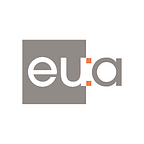How Research Changed My Priorities in Medical Clinic Planning and Design
How do the sites we are given affect overall building performance?
Architects are trained to consider how buildings are located on a site. For most of us, building orientation — or the direction it faces — was an important aspect of our training. We know there is plenty of direct sun and potential heat gain with South facing windows and the best indirect light comes from the North. However, in many instances we don’t get to choose the project site and work with what we are given.
We are often approached by our healthcare clients to do feasibility studies for potential clinic sites. Our clients select sites based on the location within a targeted zip code or neighborhood that serves a specific patient population; which often results in a site that feels less than ideal due to size, access, shape and location. These site challenges led me to ask, how do the sites we are given affect overall building performance?
This question is timely since EUA is involved in AIA’s 2030 Commitment to reduce energy use in buildings with a target to design all buildings for net zero energy use by 2030. This is a tall order. It certainly presents challenges as we deliver projects for cost conscious healthcare clients.
EUA uses energy and daylight modeling software by cove.tool to analyze daylighting and the predicted energy use intensity (pEUI) of our buildings. The software allows us to look at the energy impacts of various design options very early in the design process; providing easy to understand results that help clients make informed decisions.
To answer the building orientation question we used cove.tool to study the impact building orientation has on energy use in a medical clinic. We used a “typical” design and cove.tool energy modeling to see what the pEUI would be for eight building orientations in Southeast Wisconsin. The results were surprising and somewhat of a relief. It turns out that due to the high air change requirements and equipment loads in the clinic setting, the energy use varies very little based on building orientation; with the energy costs only varying by $1200 annually across all eight building orientations. This research suggests that building orientation has minimal impact on energy use for a typical medical clinic.
Graphic is an excerpt of 8 building orientations from EUA Research Initiative on the Building Orientation Impacts on Energy Use in Clinic Design.
So, if the building orientation for our clinics doesn’t have a strong impact on energy use, what design considerations are important as we plan our buildings? We identified several additional sustainable strategies that have a positive effect on user comfort while delivering a sustainable building:
- Daylighting and Glare: Due to deep floor plans, many clinic spaces lack natural light and views. Where possible, maximizing light and views can improve the overall experience. Lighting sensors and blinds can reduce overall energy use while limiting the adverse effects of glare.
- Prevailing Winds + Occupant Comfort: Air infiltration at doorways has a noticeable impact on energy use. Orienting the building to avoid prevailing winds at entries improves the user experience and eliminates heat gain or loss at doorways and vestibules.
- Views + Outlook: Considering the views to and from the site by orienting the building to a particular view can enhance the patient experience and often creates a positive distraction to balance stressful situations. Views to the building are also important for corporate identity and helping visitors clearly understand how to access the building.
- Urban Design + Site Strategies: Site design and building placement should preserve natural features. Thoughtful parking layouts that preserve open space and control stormwater are important sustainable approaches. Urban sites where building orientation is established by a street edge should not be dismissed and should be used to connect the clinic to the street and community.
EUA’s research using the cove.tool informs our design process. Conducting studies like this one, we’ve learned that building systems and technology make orientation less important for some building types. As a healthcare designer, knowing that building orientation can be placed lower on the priority list of the many design drivers is welcome news, allowing us to focus on other considerations that can positively impact the environment and the people who use our healthcare facilities every day. Interested in seeing how your next project’s site impacts the energy use of your building? I’d love to use the cove.tool to show you how.
Related Insights: See full article…
Originally published at https://www.eua.com.
